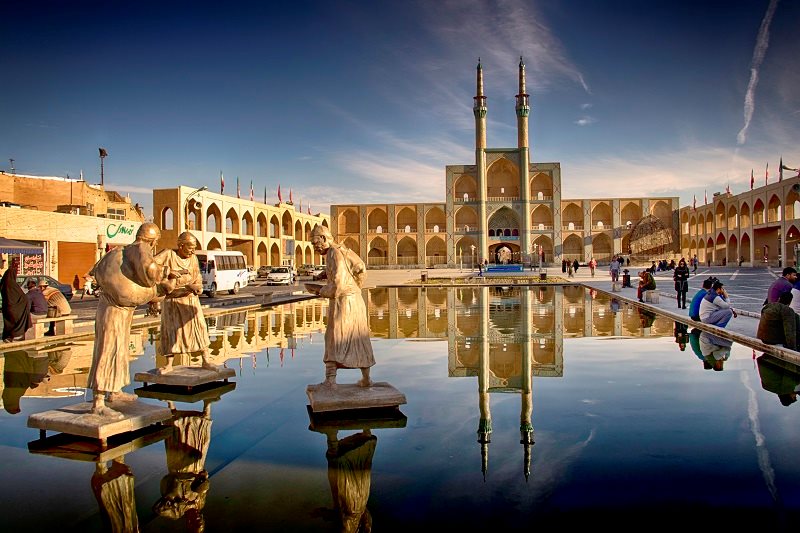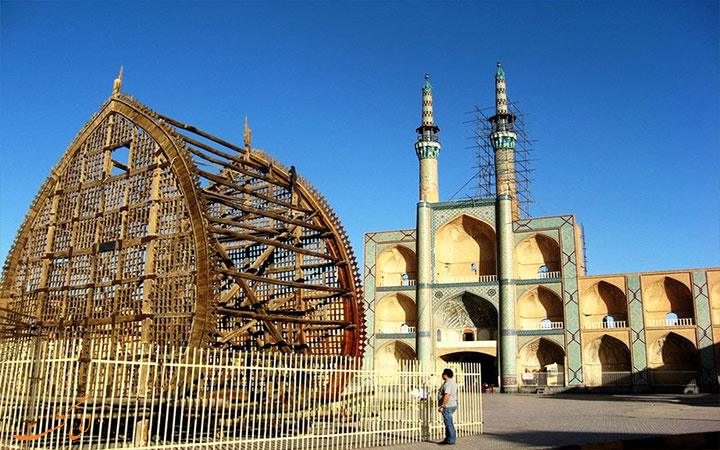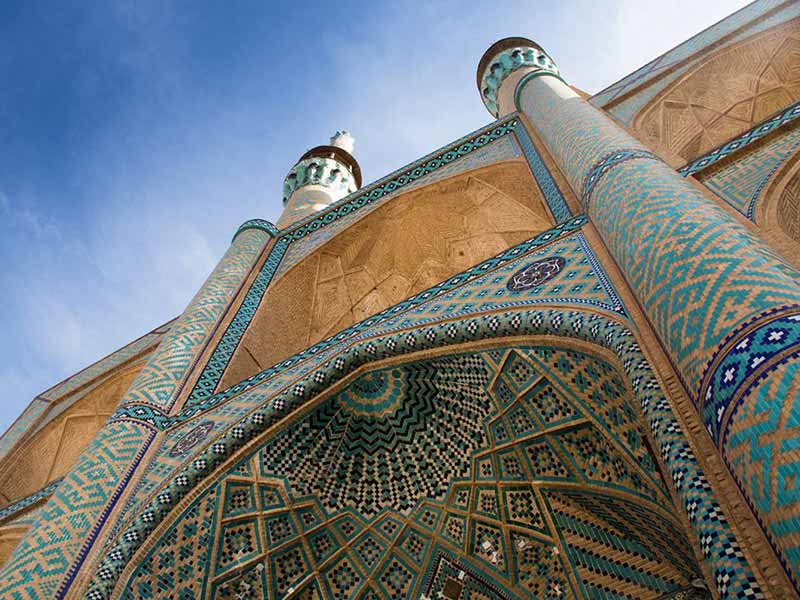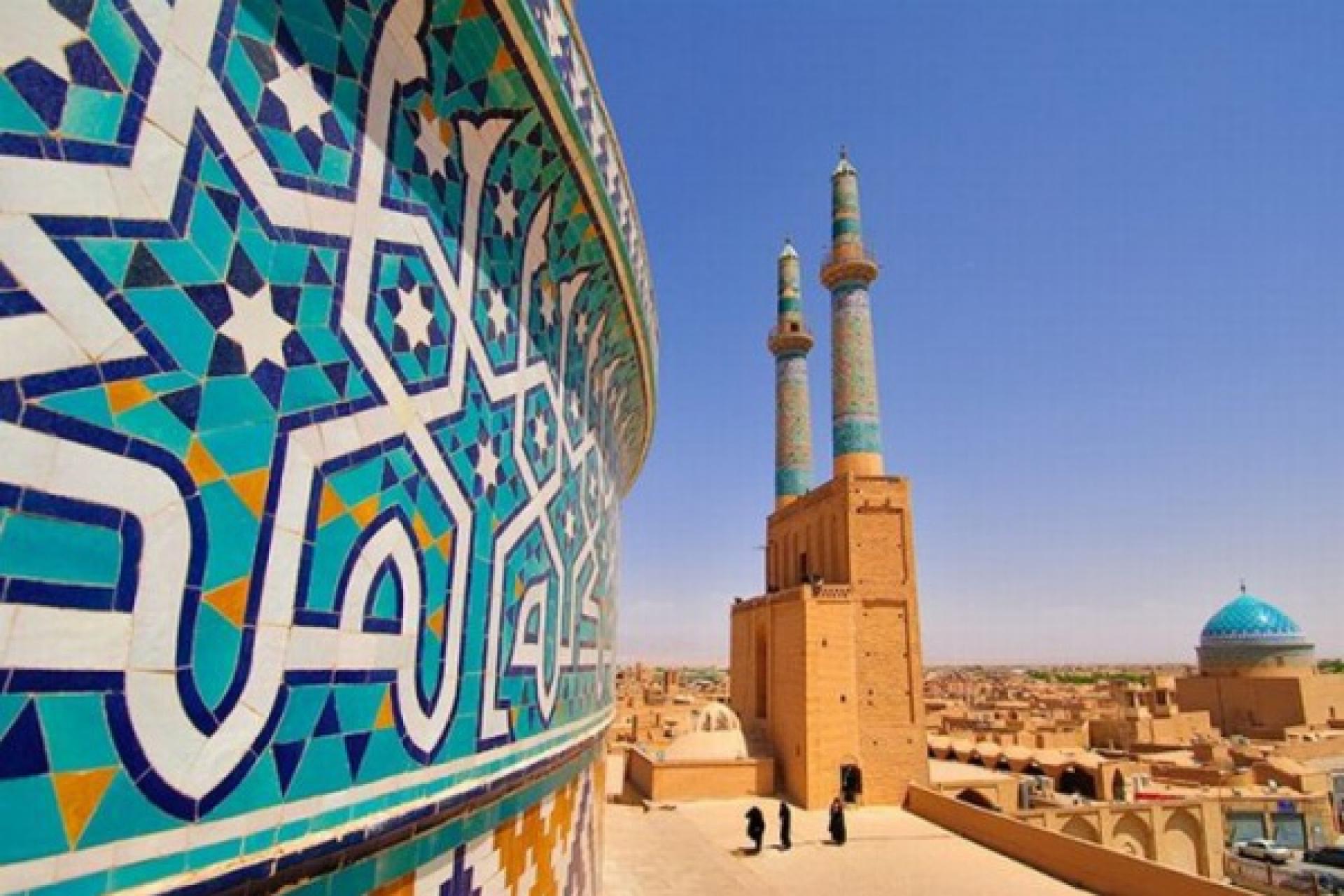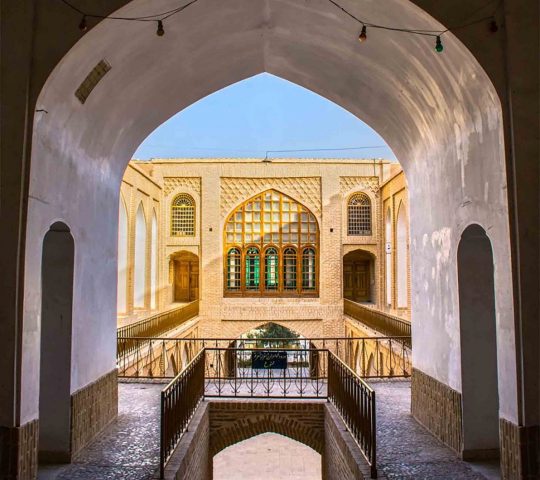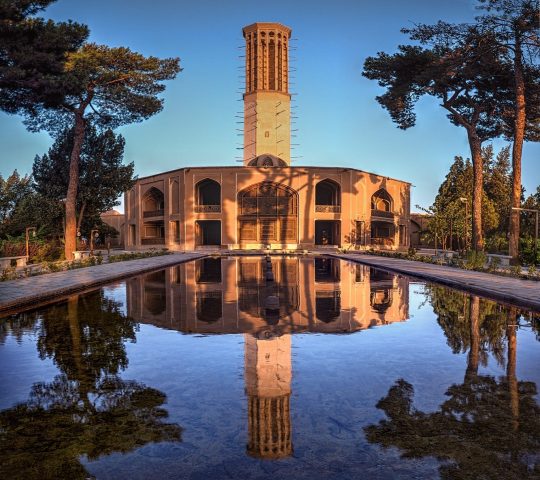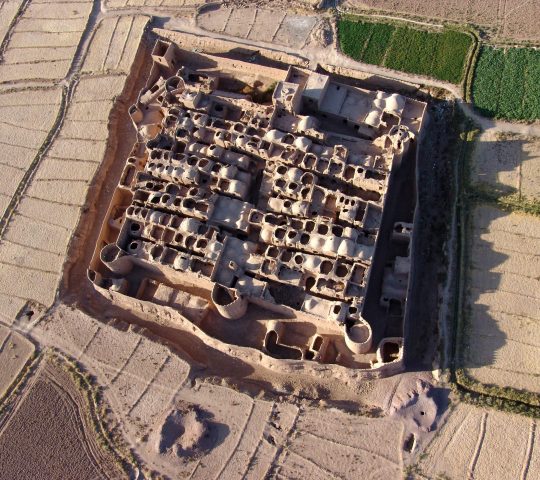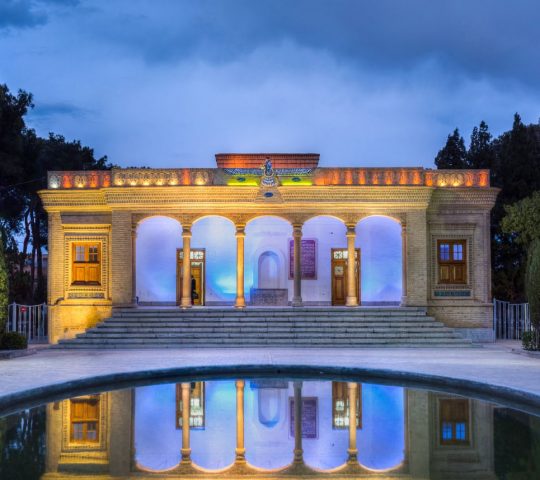Amir Chakhmaq Complex
Hightlight
-
 Car parking
Car parking
The Amir Chakhmaq Complex is a prominent structure in Yazd, Iran, known for its symmetrical alcoves. It is a mosque located on a square of the same name. It also contains a caravanserai, a tekyeh, a spa, ancient water well, and a pastry shop. At night, the building is illuminated after the hours of twilight and after sun set with orange lighting in the arched niches which makes it a sight.
Structure of the Amir Chakhmaq Square
The mosque on a square named after Amir Jalaleddin Chakhmaq, a governor of Yazd during the Timurid dynasty (15th to 16th centuries). The complex is located opposite what used to be the Yazd Water Museum.
The main structure has three floors and an elaborate symmetrical facade with niches and arches. It is the largest structure in Iran. In the center, there are two very high minarets. The spiral staircase in one of the two minarets is said to create a claustrophobic feeling while offering a great view of Yazd. The bathroom at the front of the building is approximately 600 years old. Arches have recently been added on the flanks to ensure traffic safety. Only the first floor above ground level is accessible. There is a shopping complex in the basement of the property.
The complex includes a tekyeh used to commemorate the death of Hussein Ibn Ali. In one corner of the tekyeh, there is a nakhl, described as “a wooden object with large metal fixtures and studs”. He was revered during the Shiite commemoration of Ashura.
History and rebuilding
Amir-Chaghmaq was built in the 15th century by Jalal-al-Din Amir-Chakhmaq, the governor of Yazd during the Timurid dynasty. This square was established on the north side of an important mosque called the old mosque, now known as the Amir-Chakhmaq mosque. The mosque was also founded by Amir-Chakhmaq between 1418 and 1438. In the same year, the mosque was inaugurated by Haj Qanbar Jahanshahi, who was the next governor, who built a bazaar and a caravanserai on the sides of the square.
Many parts of the complex deteriorated until the 18th century, in the Safavid era, when Bahador Khan Shams Yousef Meibodi renovated parts and rebuilt the caravanserai in the same location. The complex experienced a new process of decay until the end of the 19th century, when, the Tekyeh was built by Abu-al-Qasim Rashti at the entrance to the bazaar.
Most of the changes in the Amir-Chakhmagh square were implemented during the Reza Shah modernization period. Completing Pahlavi Street in 1935, the northern part of the square, which connected with the Bazaar, was demolished. It seems that the caravanserai was demolished at the same time, in order to develop the square into a more orderly rectangular shape.


